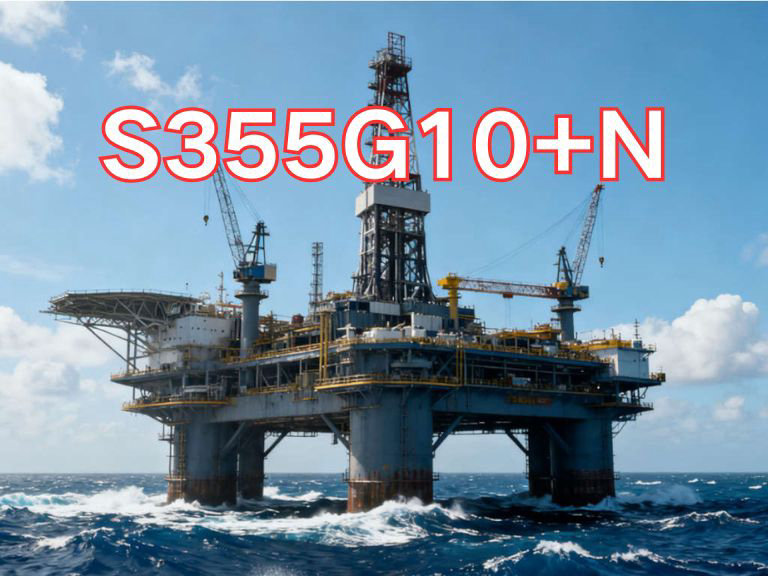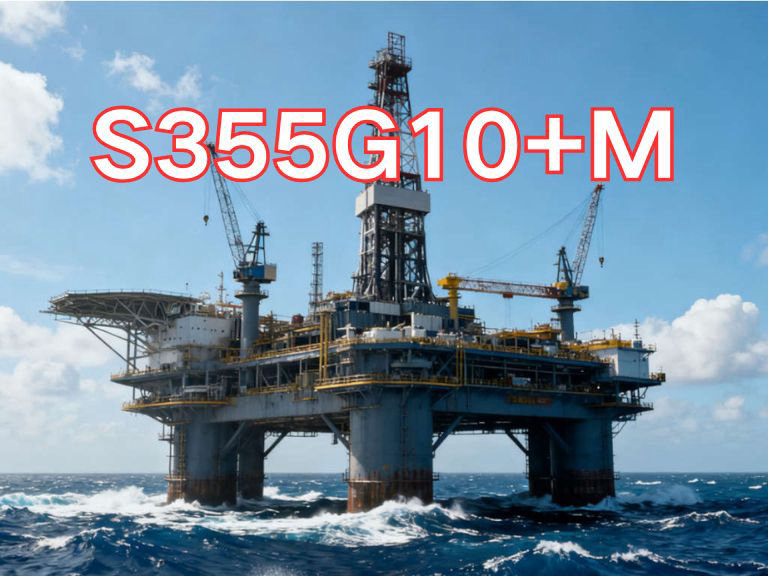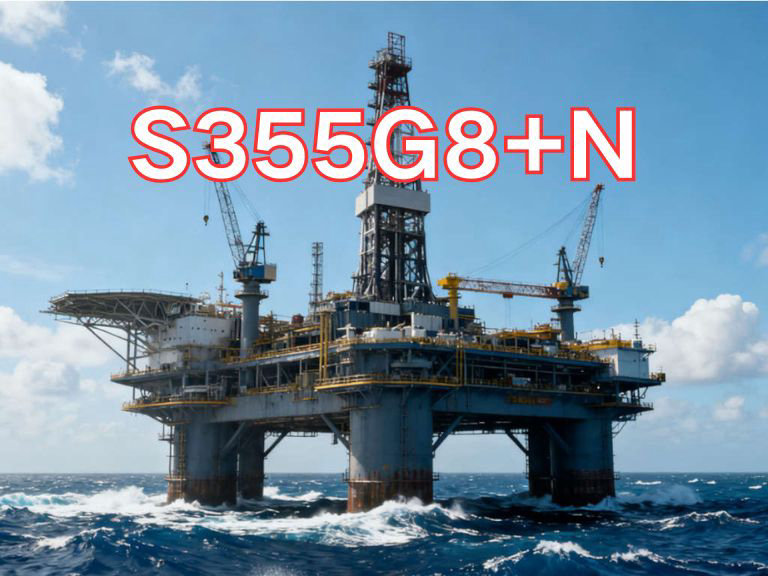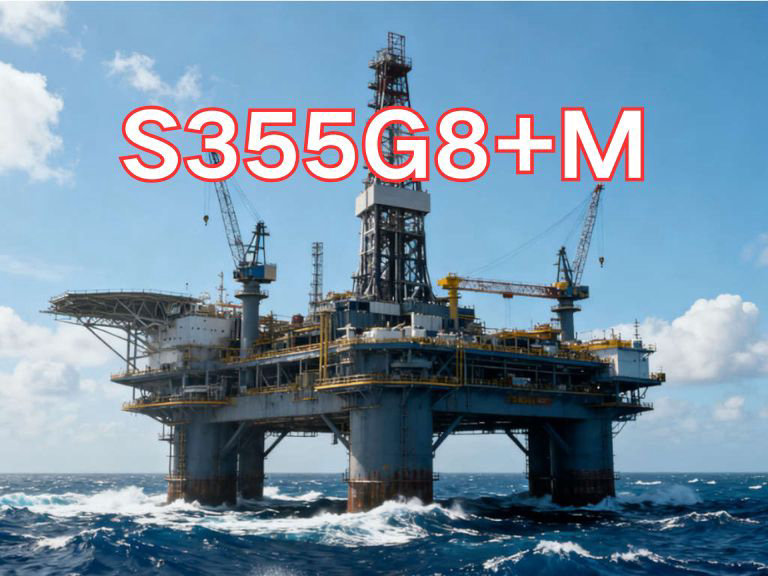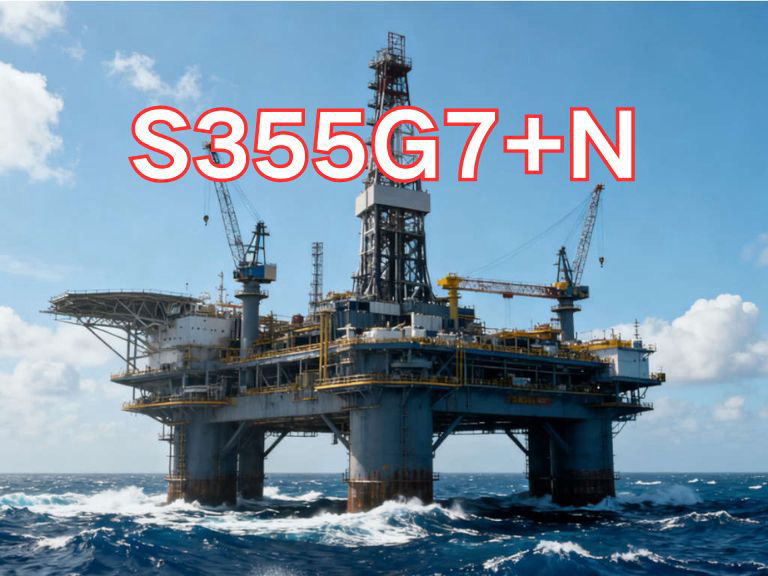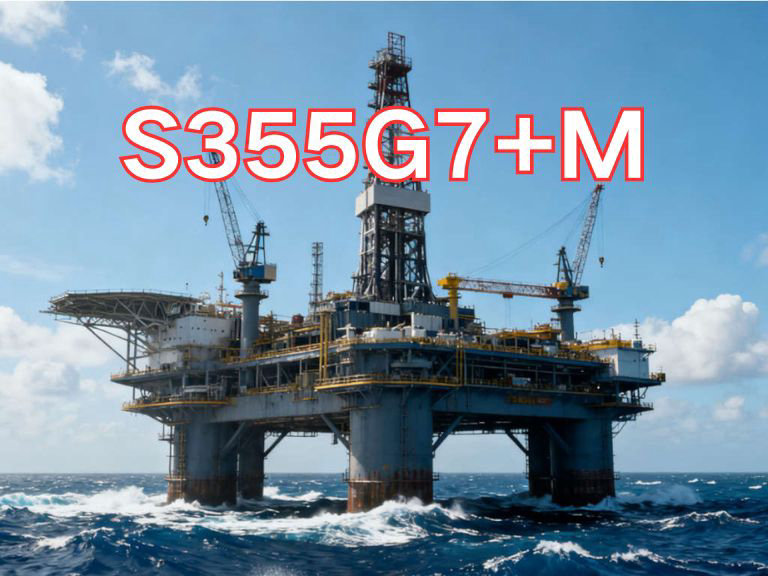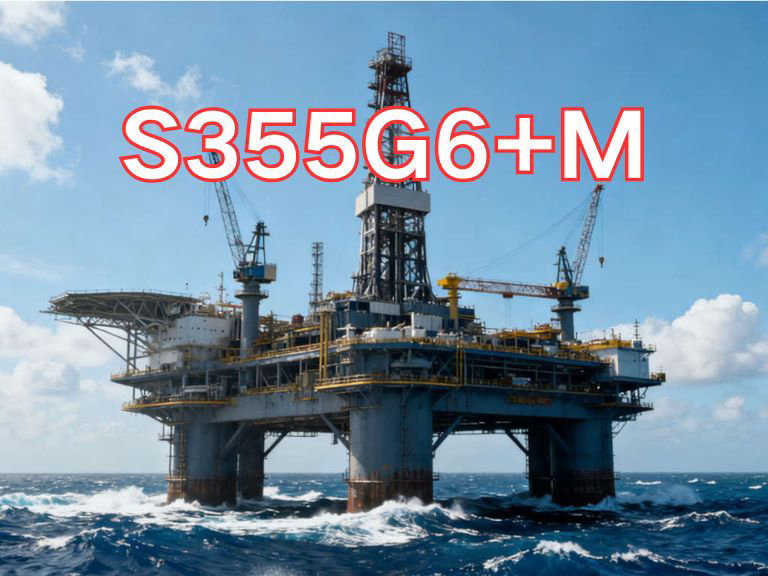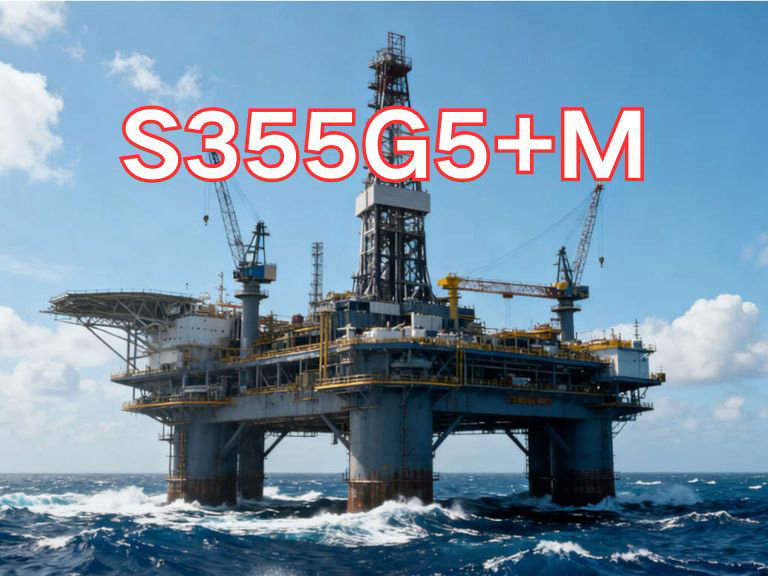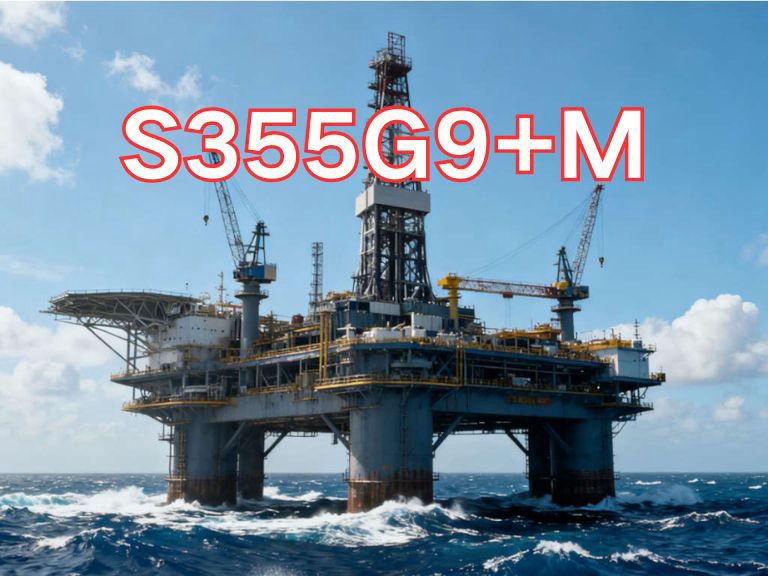

S355G9+M
S355G9+M is a high-strength structural steel plate widely used in the field of marine engineering. It is an ideal material for manufacturing fixed offshore structures due to its excellent mechanical properties and weldability.
1. Name Meaning
The designation S355G9+M contains key information about the steel plate:
S: Stands for Structural Steel.
355: Indicates the minimum yield strength value of 355 Megapascals (MPa), measured at a thickness ≤16mm.
G9: Represents a number related to the characteristics of the steel grade, used to distinguish between different performance grades.
+M: Denotes the delivery condition of Thermomechanical Rolling (Thermo-Mechanical Control Process, TMCP). This process refines the grain structure by controlling rolling temperatures and cooling rates, thereby enhancing the overall properties of the steel.
2. Main Applications
S355G9+M steel plate is specifically designed for marine engineering structures, particularly for applications that must withstand harsh marine environments and dynamic loads:
Construction of offshore oil drilling platforms.
Offshore wind power infrastructure, such as foundation piles and support structures.
Harbor equipment and other coastal and offshore structures.
Its excellent low-temperature toughness makes it particularly suitable for offshore structures operating in low-temperature environments.
3. Performance Characteristics
S355G9+M steel plate exhibits the following notable characteristics:
Excellent Low-Temperature Toughness: It maintains good toughness at temperatures as low as -40°C, with an impact energy value of ≥50 Joules, providing resistance to brittle fracture.
High Strength and Good Ductility: Its tensile strength ranges from 470-630 MPa, and its elongation after fracture is ≥22%, ensuring structural stability and safety.
Excellent Weldability: The low carbon equivalent design (C ≤ 0.12%) and controlled chemical composition give the plate good weldability, making it suitable for the welded fabrication of large marine structures.
Strict Chemical Composition Control: Stringent limits are placed on the content of harmful elements such as Phosphorus (P ≤ 0.02%) and Sulfur (S ≤ 0.010%), as well as residual elements, ensuring high steel purity and consistent properties.
4. Applicable Standard
The current international standard for S355G9+M steel plate is: EN 10225:2009 -Weldable structural steels for fixed offshore structures - Technical delivery conditions. This standard specifically defines the requirements for chemical composition, mechanical properties, and weldability of steels for offshore structures.
In summary, S355G9+M is a high-technical-content steel plate specially designed for marine engineering. Through special alloy design and the thermomechanical rolling process, it achieves a balance of high strength, high toughness, and excellent weldability, meeting the engineering requirements for various harsh marine environments.

Ultrasonic Testing (UT)
A key non-destructive testing technique that uses high-frequency sound waves to detect internal flaws in steel plates. The probe emits sound waves, which reflect when encountering defects such as cracks or inclusions. The receiver captures the echoes, enabling precise determination of defect location and size. With high sensitivity, strong penetration, and fast inspection speed, UT effectively ensures internal quality, widely used in the production of heavy plates, pressure vessel plates, and other high-end products to guarantee safety and reliability.

Magnetic Particle Testing (MT)
A common surface inspection method that magnetizes the workpiece, causing leakage magnetic fields at surface or near-surface defects like cracks or inclusions, which attract magnetic particles to form visible indications. Simple to operate and highly sensitive, MT is suitable for rapid inspection of surface and near-surface flaws in ferromagnetic materials, widely used for online or offline inspection of plate edges, ends, and welds, ensuring product quality and safety.

Penetrant Testing (PT)
A non-destructive method for detecting surface-breaking flaws. A penetrant liquid is applied to the cleaned steel surface, allowing it to seep into defects such as cracks or pores. After removing excess penetrant, a developer is applied, causing the trapped penetrant to bleed out and form visible indications. Simple and cost-effective, PT is suitable for inspecting surface defects in various non-porous materials, commonly used for welds, castings, and complex components, effectively ensuring surface quality of steel plates.


